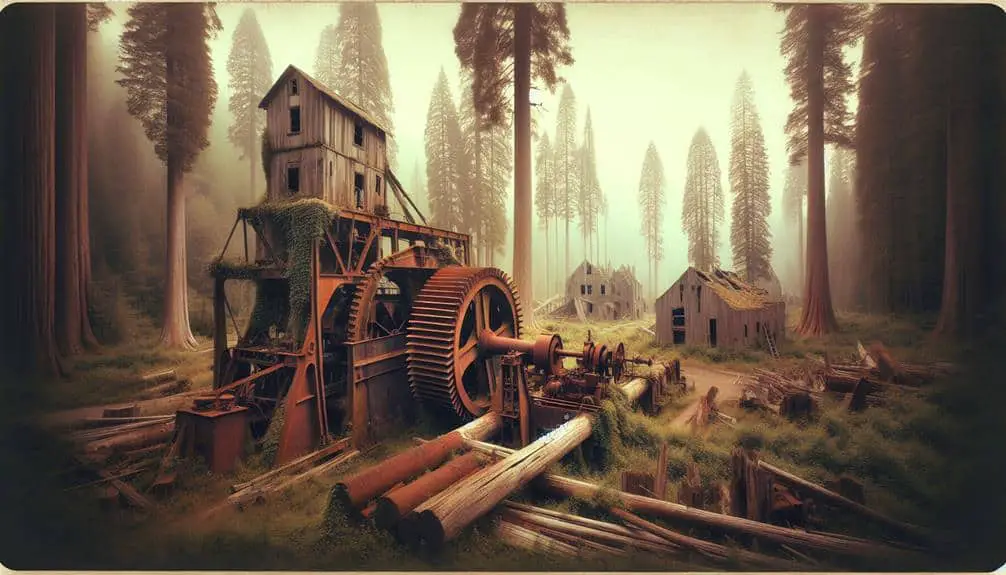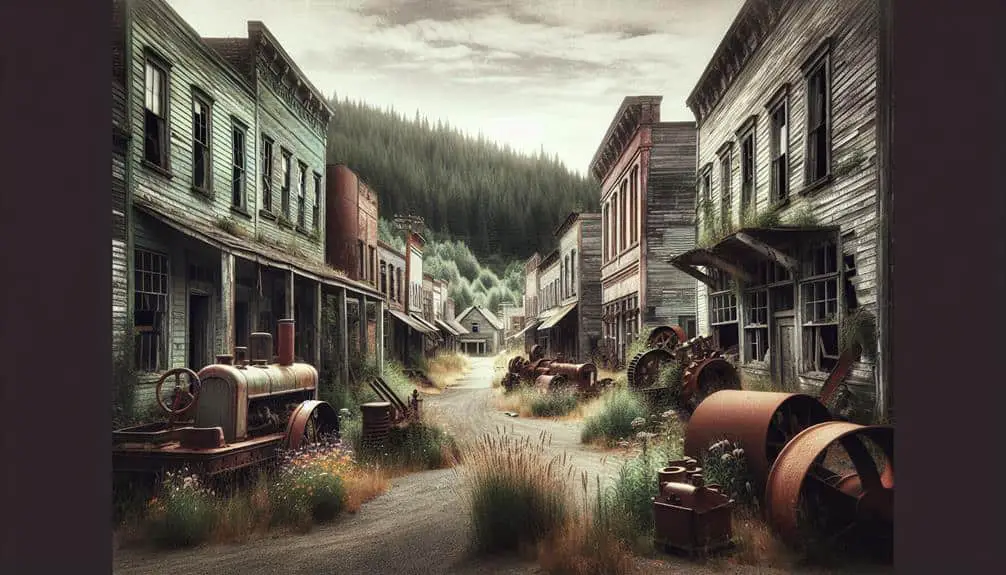Explore the revival of abandoned woodcutting villages across America where craftsmanship, community, and sustainability unite to breathe life into historic settlements. Discover the rich heritage, intricate wood carving techniques, and tight-knit communities of the past. Learn about the challenges faced, like industrial impact and environmental issues, and the innovative solutions implemented for restoration. Delve into success stories from Cedar Hollow to Pinecrest, showcasing economic initiatives and cultural preservation efforts. Uncover strategies focusing on community engagement, environmental preservation, and sustainable practices for long-term viability. Get inspired by the remarkable resurgence of these once-forgotten villages.
Key Points
- Community engagement is vital for long-term success and sustainability.
- Foster a sense of ownership and pride within the village.
- Implement eco-friendly practices for environmental preservation.
- Introduce sustainable logging techniques and reforestation projects.
- Support wildlife conservation to ensure ecosystem health.
Historical Background of Woodcutting Villages
In the late 19th and early 20th centuries, woodcutting villages thrived across America, embodying a rich heritage of craftsmanship and sustainability. These villages had their origins deeply rooted in the lush forests and valleys of the country, where skilled artisans and hardworking individuals came together to form tight-knit communities centered around the art of woodcutting.
The traditions passed down through generations weren't just about felling trees but about a way of life that revered nature and honored the resources it provided.
The woodcutting villages were bustling hubs of activity, with the sound of axes ringing through the air and the scent of fresh pine wafting from the workshops. Families worked side by side, teaching their children the intricate techniques of carving and shaping wood with precision and care. These traditions were more than just livelihoods; they were a reflection of a deep connection to the land and a respect for the craft that sustained them.
In reviving these abandoned villages, we seek to honor their origins and preserve their traditions for future generations to experience and cherish.
Causes of Decline in Logging Towns
During the industrial revolution, logging towns across America faced a myriad of challenges that contributed to their eventual decline. Environmental impact played a significant role in the decline of these once-thriving communities. The extensive deforestation and depletion of natural resources led to soil erosion, loss of wildlife habitats, and disrupted ecosystems.
Vital factors also played a pivotal part in the downfall of logging towns. As demand for timber fluctuated and industries shifted towards more modern practices, traditional woodcutting villages struggled to compete. Additionally, the rise of mechanization and larger corporate logging operations further marginalized smaller, community-based logging enterprises.
Many logging towns found themselves unable to adapt to these changing circumstances, leading to widespread unemployment and economic hardship. The combination of environmental degradation and economic challenges created a perfect storm that ultimately led to the abandonment and decline of these once vibrant logging communities.
Challenges in Restoring Abandoned Villages
Restoring abandoned villages poses a myriad of challenges that require careful planning and innovative solutions. Community engagement plays an important role in the restoration process. Convincing former residents to return and attracting new inhabitants is essential for reinvigorating these once-thriving woodcutting communities. Encouraging local participation through town meetings, surveys, and collaborative decision-making can foster a sense of ownership and pride in revitalizing the village.
Economic revitalization stands as another significant challenge. Finding sustainable sources of income beyond logging is necessary to guarantee the long-term viability of these villages. Diversifying the local economy by promoting tourism, artisanal crafts, or eco-friendly initiatives can create new job opportunities and stimulate growth.
Overcoming these obstacles demands creativity, perseverance, and a strong sense of community spirit. By rallying together, celebrating the village's heritage, and embracing innovation, these abandoned woodcutting villages across America can be reborn as vibrant, thriving communities once again.
Successful Revival Stories in America
Thriving with renewed energy and purpose, formerly deserted woodcutting villages across America have experienced remarkable transformations through innovative revitalization efforts. One shining example is the village of Cedar Hollow in Oregon, where economic development initiatives have brought new life to the community. By focusing on sustainable timber harvesting practices and creating artisan woodcrafts, Cedar Hollow has reinvigorated its economy and provided employment opportunities for its residents. Through community engagement activities like woodworking workshops and local festivals, the village has fostered a sense of belonging and pride among its inhabitants.
Similarly, in the heart of the Appalachian Mountains, the village of Pinecrest has undergone a revival fueled by a commitment to preserving its rich woodcutting heritage. By tapping into the growing demand for handcrafted wooden furniture and décor, Pinecrest hasn't only boosted its economy but also preserved its cultural identity. The residents have actively participated in this revival, taking pride in their woodworking skills and passing down traditional techniques to younger generations. These successful stories demonstrate the power of economic development and community engagement in breathing new life into abandoned woodcutting villages across America.
Strategies for Sustainable Village Restoration
As we explore the path to revitalizing abandoned woodcutting villages across America, a key focus lies on implementing sustainable strategies for village restoration. Community engagement plays an essential role in guaranteeing the success and longevity of these revitalization efforts. By involving local residents, businesses, and organizations in the restoration process, a sense of ownership and pride is instilled within the community, fostering a sustainable future for the village.
Environmental preservation is another critical aspect to contemplate when restoring abandoned woodcutting villages. Implementing eco-friendly practices such as reforestation projects, sustainable logging techniques, and wildlife conservation initiatives not only help restore the natural beauty of the village but also secure the long-term health of the surrounding ecosystem.
Frequently Asked Questions
How Do Abandoned Woodcutting Villages Impact Local Wildlife Populations?
When abandoned woodcutting villages scatter, wildlife habitats suffer. Conservation efforts dwindle, impacting ecosystem balance. Biodiversity preservation falters. Rejuvenating these settlements could revitalize local flora and fauna, fostering a harmonious coexistence between humans and wildlife.
Are There Any Initiatives in Place to Preserve the Cultural Heritage of These Logging Towns?
Preservation initiatives play an essential role in reviving the rich cultural heritage of logging towns. Through dedicated efforts and community involvement, these initiatives breathe new life into forgotten histories, ensuring their legacy endures.
What Role Do Local Communities Play in the Restoration of Abandoned Woodcutting Villages?
In revitalizing abandoned woodcutting villages, local communities are essential. Their enthusiasm fuels restoration efforts, preserving history and fostering growth. By uniting to honor heritage, these towns breathe new life into forgotten landscapes.
How Are Water Resources Managed in Revived Logging Towns to Ensure Sustainability?
In revitalized logging towns, water resources are managed through careful conservation measures and sustainable practices. Residents like you play an essential role in this effort, ensuring that these communities thrive while preserving their natural surroundings for future generations.
What Economic Opportunities Are Available in Revitalized Woodcutting Villages Beyond Logging and Forestry Industries?
So you're wondering about the economic opportunities in revitalized woodcutting villages? Well, beyond the obvious logging and forestry gigs, there's a whole world of possibilities like agroforestry, ecotourism, small businesses, and artisan markets waiting for you to explore!



